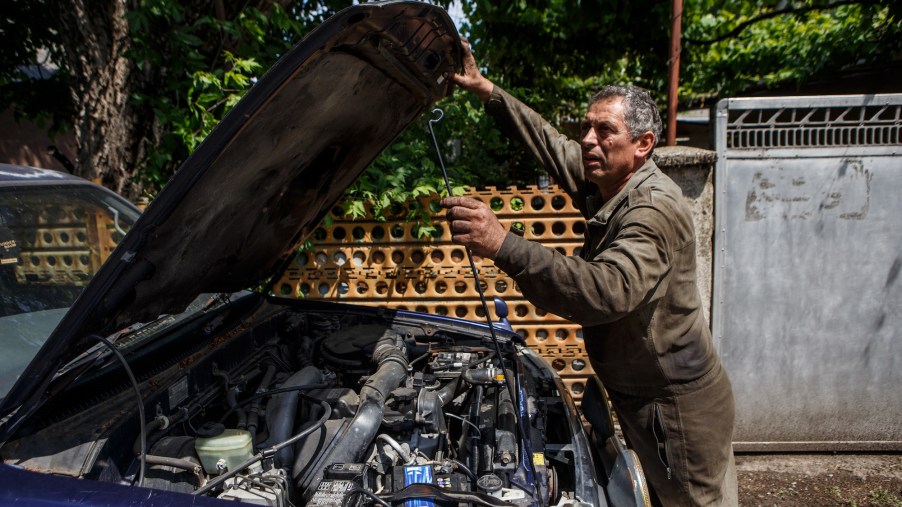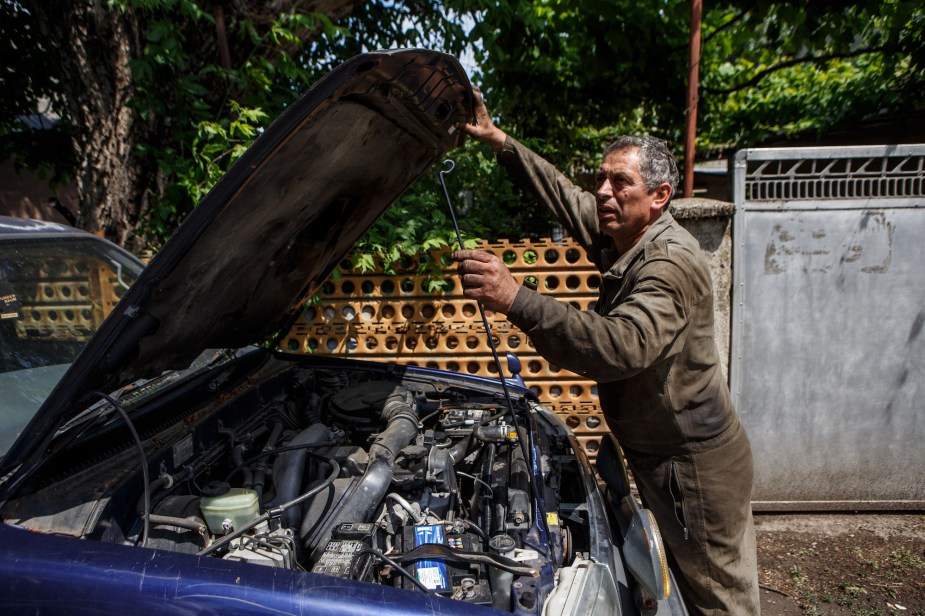
Car Maintenance so Easy You Can Do It Yourself
There are several ways to keep your vehicle going strong for many years. You can use quality gasoline, ensure your battery connections are clean, and perform regular maintenance on your car. However, not all tasks have to be done by a professional. Some are pretty easy and could be done by yourself. Why is maintaining your vehicle so important, and what tasks are simple enough to do on your own?
Why it’s important to handle some car maintenance yourself

Maintaining a vehicle is crucial because you want to avoid expensive car repairs that can pop up down the road. Replacing a damaged engine, for example, will cost you thousands of dollars, so keeping it in good shape is a must.
While bigger projects, like replacing an engine, are probably better left to the professionals, there are still many smaller tasks it may be best for you to conquer rather than paying someone to do them.
Most people are aware by now that prices for just about everything is going up. One of the best ways to combat that is to save money wherever you can, including car maintenance, at least minor ones. So why pay more on a repair bill for items you could easily do yourself.
According to CNET, there are a few tasks they recommend trying to do on your own to save a little bit of money. Here are the seven DIYs they propose.
1. Replace the windshield wipers
Over time, the rubber on the windshield wipers breaks down and cracks, rendering them ineffective. If yours are worn, it’s time to replace them with a fresh set. CNET recommends changing them every year. You’ll need to ensure you get the same length of blades to fit on your vehicle.
To put the new ones on, you will need to unlock the old ones either by releasing a clasp mechanism or pressing a button. They will then slide off the track of the wiper. Simply slide the new ones on, lock them in place, and you have successfully replaced your windshield wipers.
2. Replacing a blown fuse
Sometimes electrical problems are easily fixed by replacing a bad fuse. If you’re having issues with your stereo, power windows, or the lights in the vehicle, track down the fuse that controls the power to them. See if there’s any indication that something went wrong, like a broken wire inside or a part of it melted.
You can find the fuse by checking your owner’s manual and the diagram inside the lid of the fuse box. There are two of these boxes in your vehicle. One will be under the dashboard on the driver’s side and the other under the hood of your car. Use needle-nose pliers or the fuse removal tool found in some fuse boxes to remove the bad fuse. Replace the bad fuse with one of the same amperage, which is marked on the outside of the fuse itself.
3. Check your tire pressure
If you keep your tires properly inflated, you will lengthen their life and provide a smoother ride on the road. When tires start losing air, you will notice the ride become bumpier and stiff, and they will wear out quicker and more unevenly. You should check the pressure in your tires at least once a month.
Use a tire pressure tester to determine if they’re properly inflated. Check your owner’s manual or the driver’s side door pillar for the correct rating for your vehicle. If they’re too low, you can use an air compressor at a local gas station to get them up to the proper PSI (pounds per square inch) rating.
4. Check your fluid levels
One of the best ways to avoid costly repairs down the road is to regularly check the fluid levels in your vehicle. If something is low, you can fill it with what it needs before damage occurs to some of the more expensive parts of your car, like an engine. Once a month, you should check your engine oil, transmission fluid, brake fluid, and power steering fluid. Each one will have a dipstick with the correct level marked on it.
Check your antifreeze (engine coolant) every six months to ensure it isn’t low. Windshield wiper fluid needs to be checked often, so whenever you are under the hood, keep an eye on that and fill it if needed.
5. Changing the air filter
The air filter in your car prevents dirt and debris from getting inside the engine, causing irreparable damage. Experts recommend that you replace it every 15,000 miles or so, which is the equivalent of approximately once a year. If it gets clogged with debris, it won’t be able to catch any more dirt coming through, which means the crud will slip through the air intake and into the engine.
To replace it, look under the hood, and you will find the air filter box with a set of clips that keeps it locked. Open up the box, remove the old filter, and replace it with the correct one. Lock it up once finished, and you’re good to go. The filter should cost around $10 or so, and by making it a DIY project, you save yourself from having to pay the mechanic extra money to do it.
6. Replacing new headlights and taillights
For most vehicles, this is a relatively easy repair. When you find that a bulb has burned out in the headlights or taillights, you will want to purchase the correct bulb to replace the old ones.
To install a new headlight, turn the car off, and open the hood to look at the back of the headlights. The bulb is set into the light housing and will be connected to a power plug. Remove the plug and dust cover. Carefully pull the bulb out and replace it with the new one. Put the bulb back into the housing and dust cover. Plug the power cable back in and check to ensure the lights work.
7. Replacing spark plugs
Replacing sparks plugs is one of the more involved maintenance tasks, but it can still be a DIY project in most cases. For older vehicles, they need to be replaced every 30,000 to 40,000 miles. Newer cars can go every 80,000 to 100,000 miles before replacing them, depending on how well you maintain your vehicle. If you let them go while they’re bad, you’ll notice your engine having a loss of power, trouble starting, or issues with accelerating.
You’ll need the correct type and number of spark plugs for your engine and a spark plug socket with a torque wrench to remove the old plugs. You should also have a gap tool as well. Uncover the spark plugs from the engine and use the socket to remove the old ones. Once they’re gone, check the gap on the new plugs to ensure they are set to what the engine manufacturer recommends, which is found in the owner’s manual.
Screw each one until it’s hand tight and replace the plug covers. Try starting your vehicle to see if the engine turns over. If it starts without any issues, you’re all done.
With the prices of almost everything going up, you’ll want to start saving money wherever you can, including minor car maintenance tasks, like checking the air pressure in the tires or replacing spark plugs. Some of these are simple to do, so why not try to do some of them yourself.


